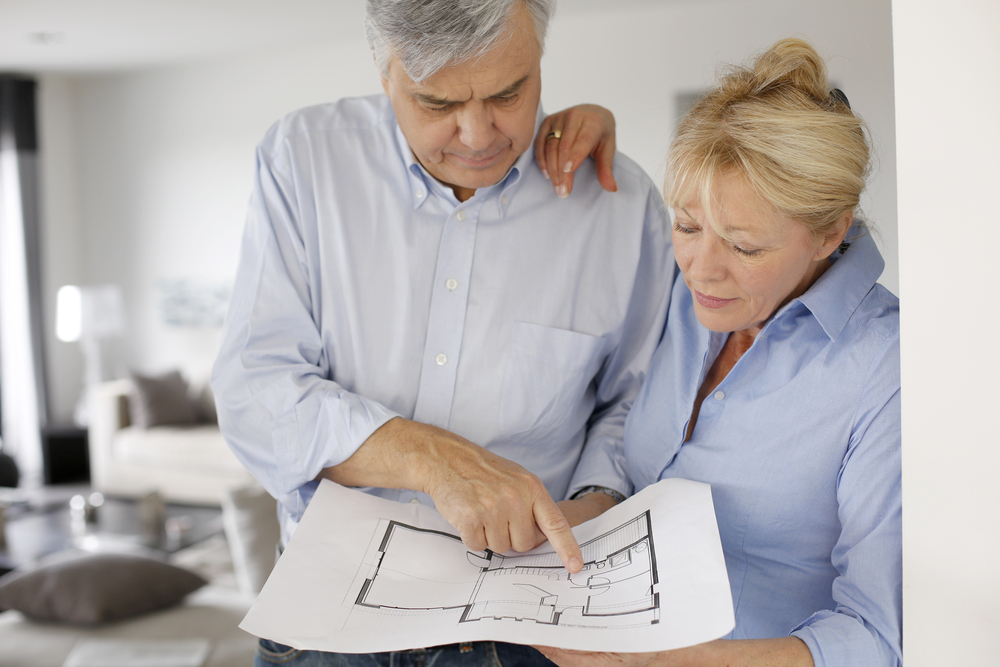Aging in Place: How to Make Sure Your Home Fits Your Needs as You Age

For many seniors, home is where the heart is, and home is where you want to stay. If your heart is set on aging in place, it’s never too soon to begin considering how you can adapt your home to fit your needs as your abilities change with time.
Creating an age-friendly home may require some special planning, research, and investment. Whether you make minor aging in place home modifications or tackle bigger projects that involve aging in place home design, adjustments that make your home safer and more functional can help protect your well-being so you can continue enjoying familiar surroundings in comfort.
Modifications Requiring Minimal Work and Money
Making your home safer for you to age in place doesn’t necessarily require a major overhaul. In fact, you may be surprised how some small changes can go a long way toward creating an age-friendly home. Some of them won’t cost anything at all!
Go room to room and evaluate how you can rearrange the furniture to create wider walking paths and remove safety hazards, like rugs and other items that pose a tripping or fall risk. Another step toward protecting your safety is reducing clutter, which may mean selling, donating, or throwing away some things, and finding new storage spots for others. Well-lit rooms contribute to better safety and protect your eye health, so replace dim bulbs and add more light fixtures to brighten dim spaces.
Pay special attention to rooms where your safety risks are greatest, such as the bathroom and kitchen. Grab bars near the toilet and entrance to the shower will help you maneuver comfortably, and assistive devices like a shower stool or grabber will help you complete your activities of daily living safely and efficiently. In the kitchen, put items you use frequently in easy reach by rearranging your cabinets and adding slide-out shelving.
Updates that Take a Little More
Depending on whether you have some beyond-the-basics handy skills or have a handyman on call, these ideas for aging in place gracefully may cost a bit more but will be well worth the added effort.
Especially when you start investing larger amounts of money, you’ll want to prioritize highest-risk areas. In the bathroom, a taller toilet can help you lower and raise more safely and comfortably. Nonslip texturing will prevent falls on damp floors, and you might consider installing a walk-in style tub or a curbless shower for easier access.
Doorknobs and other hardware throughout the house can add up quickly, but lever knobs make doors much easier to grip and open. You may not have given light switches or electrical outlets much thought before now, but relocating them to more accessible heights and replacing traditional switches with rocker panels, knobs, or panels can be gentler on hands and fingers.
Safe passage into and out of your home is essential, so a ramp to bypass the stairs may be a solution worth considering. Other moderately priced updates could include smart technology to help you control home features like lights, locks, and the thermostat from a touch-screen device.
Big Projects with Sizable Price Tags
For a variety of reasons, your home may not be ideally suited to aging in place, but that doesn’t mean you can’t make renovations if you have the budget available. Accessibility is the most likely reason to make these sizable investments, especially if your home predates current code requirements for home design under the Americans with Disabilities Act.
If you rely on assistive equipment like a cane, walker, or wheelchair now or anticipate that possibility in the future, you may find it necessary to expand doorways or halls so you can travel throughout the home. Adding or converting a main floor master bedroom and moving laundry facilities to the main floor are two other common projects that make aging in place easier and more practical for many seniors.
Other upgrades aren’t necessities but enhance your ability to enjoy your home while you’re aging in place. Examples include creating a patio or constructing a deck where you can access fresh air and natural light.
Identify Additional Resources
While your physical living space plays an essential role in your desire to age in place, other resources are available to help support your independence and ensure you’re enjoying the greatest quality of life possible.
Contact us to learn more about how the Springpoint Choice membership program can help you with your needs as you age in place while giving you access to additional support if your health changes down the road.
